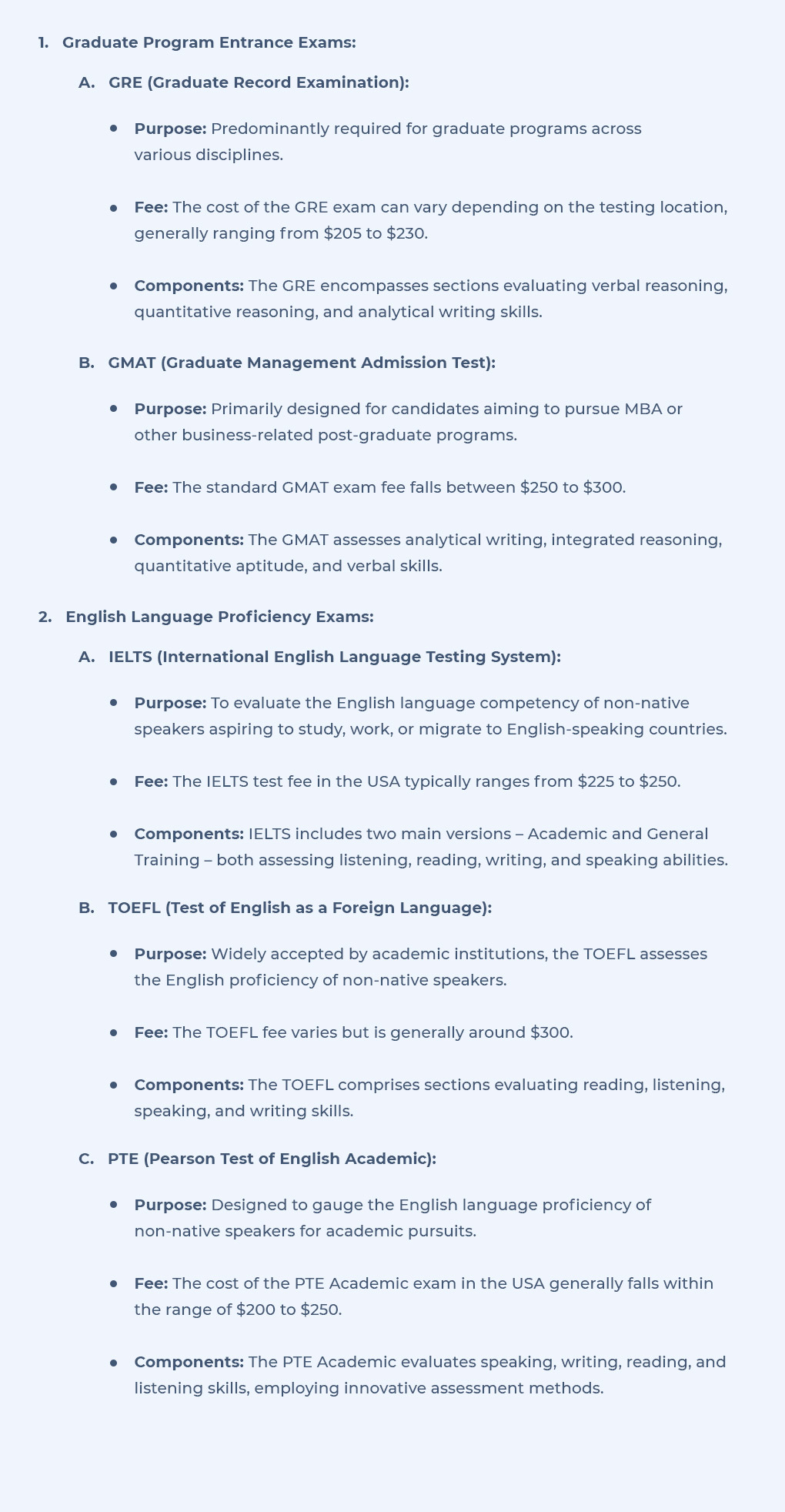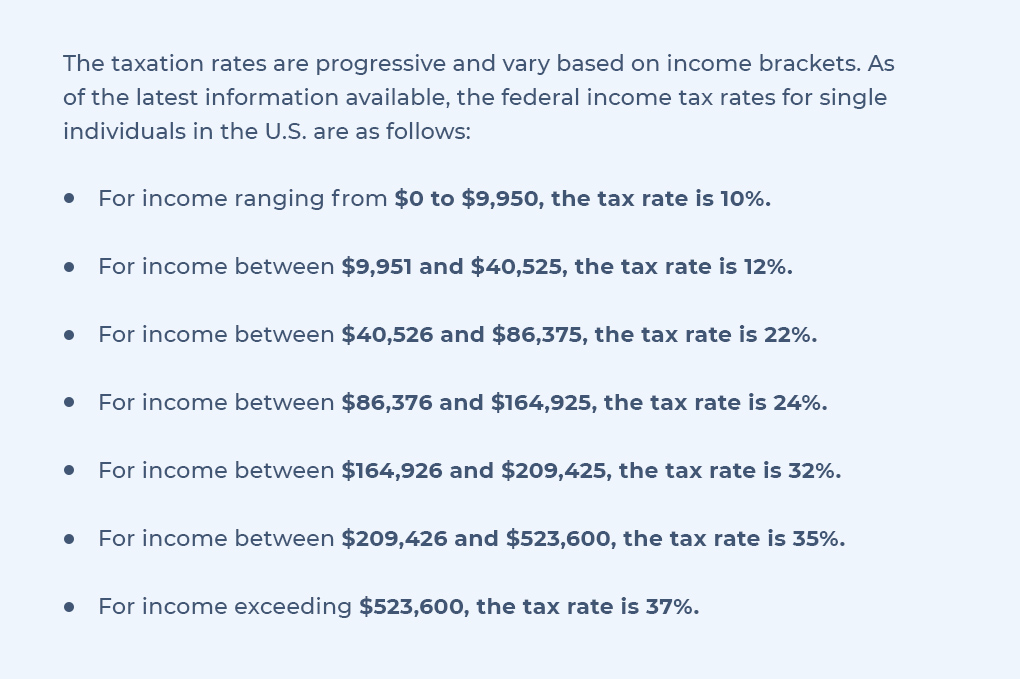

The United States has long been a popular destination for international students, and for good reason. US universities are consistently ranked among the best in the world, offering a world-class education. The US also has a rich culture and history and is a welcoming and diverse country.
In recent years, the number of international students studying in the US has continued to grow. As of 2023, there were over 1.1 million international students enrolled in US universities. This growth is being driven by a number of factors, including the US's strong economy, its reputation for quality education, and its welcoming environment for international students.
In this blog we will cover the following topic: In this blog we will cover the following topic:
Educational institutions in the USA, known for their excellence, offer a range of course fees that vary based on different factors:
It's important to note that tuition fees in the USA vary significantly between institutions and can also be influenced by factors like location, program type, and financial aid options available.
The USA offers a diverse and vibrant lifestyle, but it also comes with a high price tag.

Eating out at a casual restaurant will cost you about USD 15 on average for a meal. A three-course meal for two at a mid-range restaurant average at USD 60. You can also enjoy a variety of cuisines from different cultures, such as Mexican, Chinese, Italian, and Indian.
International students living in the USA usually need between USD 1,500 and USD 3,000 per month to cover their living expenses, including housing, food, and entertainment. It is important to note that when applying for the student visa in the USA, students must show proof of their financial ability to support their education and stay in the country.
To know more about Standard of Living in USA Read our Blog: Standard of Living in USA: A Comprehensive Guide for International Students
It is not mandatory for international students to have health insurance in the U.S., but it is highly recommended and often required by most universities. Depending on the provider and the plan, this can cost between USD 1,500 and USD 2,500 per year1. Health insurance can help international students cover their medical expenses and avoid paying high bills out of pocket. Health insurance plans for international students can vary in terms of coverage, benefits, deductibles, and co-payments. Some plans may also offer additional services such as dental, vision, or mental health care. International students should compare different plans and choose one that meets their needs and budget. They should also check the visa and school requirements for health insurance before enrolling in a plan.
To know more about Medical and Health care facilities for International Students in USA read our blog

Pursuing higher education in the USA typically involves acquiring various study materials and equipment to facilitate effective learning. Similarly to global trends, the expenses associated with study resources can vary widely based on the field of study.
I. Textbooks and Reading Materials: The United States boasts a diverse array of academic programs across esteemed institutions, resulting in up-to-date curricula aligned with international standards. Consequently, students often find it necessary to purchase the latest editions of textbooks.
For disciplines such as humanities, social sciences, or natural sciences, the expenditure on books can range from $200 to $500 per year or more.
II. Specialized Tools and Equipment: Students enrolled in specialized programs like engineering, sciences, arts, or design might encounter the need for specific tools. These can encompass laboratory gear, safety gear, technical devices, advanced cameras, or artistic supplies.
The costs of these specialized items can accumulate rapidly, potentially adding $1000 to $1500 or more to the annual educational budget, especially in fields with distinct equipment demands.
III. Digital Resources and Software: With the digital shift in education, many courses rely on online resources, e-books, academic journals, or discipline-specific software tools for activities like programming, data analysis, or design work.
This digital component can lead to an extra expense of $100 to $500 per year, depending on the program's technological prerequisites.
IV. Stationery and Miscellaneous Supplies: While seemingly modest, expenses for stationery items such as notebooks, writing implements, printing, and miscellaneous supplies should not be underestimated.
These costs could range from $100 to $300 annually, forming a notable part of the overall budget for higher education.
V. Pre-owned Options and Campus Resources: To mitigate the financial burden, students often explore cost-effective alternatives like purchasing second-hand textbooks from fellow students or online platforms. Many universities in the USA offer well-stocked libraries with access to essential course materials, which significantly minimizes the expenditure associated with study resources.
The United States, renowned for its exceptional educational institutions and diverse academic offerings, remains a top destination for international students. Amid the attraction of pursuing studies in the USA, prospective students encounter various initial hurdles, including the financial commitments linked to entrance and proficiency exams.
A closer examination of the Examination costs offers valuable insights for aspiring students planning to pursue education in the United States.

Entrance exams like the GRE and GMAT are essential indicators of a student's capability and readiness for rigorous postgraduate programs. Top universities in the USA use scores from these tests to make admission decisions.
English proficiency tests ensure that international students can effectively communicate, understand course material, and participate actively in classes, thereby ensuring they can thrive in an English-speaking academic environment.
Early Preparation: Beginning preparation well in advance not only ensures better scores but also provides ample time to retake exams if needed.
Budgeting: Given these costs, prospective students should factor in these expenses while budgeting for their educational journey in the USA.
For students planning to study in the USA, it's crucial to consider visa expenses. The primary visa category for international students in the United States is the F-1 Student Visa. As of the latest information available, the application fee for the F-1 Student Visa is $160. However, it's important to note that visa fees can change over time and may vary depending on the specific U.S. embassy or consulate where the application is processed.
Additionally, students might also need to budget for other expenses associated with the visa application process, such as SEVIS (Student and Exchange Visitor Information System) fees, which are currently $350 for F-1 visa applicants. It's advisable to check the latest fee information on the official website of the U.S. Department of State or the U.S. embassy or consulate where you plan to apply for your visa, as fees are subject to change and may vary based on individual circumstances.
To know more about Student Visa for USA Read our Blog: A comprehensive Guide to Student Visa for USA: Types, Requirements, and Application Process
The United States, often hailed as the "Land of Opportunity," not only boasts a diverse range of educational institutions but also offers an abundance of recreational and cultural experiences. As an international student in the USA, your journey extends beyond the classroom, allowing you to explore the vast landscapes, dynamic cities, and cultural offerings that the country has to offer.
However, engaging in these enriching experiences comes with associated costs. Here's a breakdown of some of the expenses you may encounter:
I. Natural Wonders: The USA is renowned for its stunning natural attractions, from exploring the Grand Canyon to hiking in Yosemite National Park. While visiting these iconic sites can be a memorable experience, it's important to budget for park entrance fees, which can range from $15 to $35 per vehicle, depending on the park.
II. Cultural Adventures: The USA is home to world-famous cultural landmarks, including the Statue of Liberty, the Smithsonian museums in Washington, D.C., and Broadway shows in New York City. Ticket prices for these attractions can vary widely, with
museum entry fees often ranging from $15 to $25 and theatre tickets ranging from $50 to $150 or more.
III. Dining and Entertainment The culinary scene in the USA is diverse and offers a wide range of dining options.
Dining out at a mid-range restaurant typically costs between $20 to $50 per person
Depending on the location and cuisine. Exploring the nightlife, especially in cities like New York or Los Angeles, may include expenses for bars and clubs, with cover charges and drinks that can vary in price.Dining out at a mid-range restaurant typically costs between $20 to $50 per person
IV. Sports and Fitness: Staying active and fit in the USA is a popular choice, with
gym memberships ranging from $30 to $80 per month
Depending on the facility and location. Engaging in outdoor activities like hiking, biking, or playing sports may require equipment rental or purchase, adding to your expenses.
V. Shopping: Whether you're shopping for souvenirs, clothing, or personal care items, budgeting for shopping is essential. Many cities in the USA offer outlet malls, thrift stores, and weekend markets where you can find affordable deals.
VI. Travel: Exploring different states and cities within the USA is a common pastime for international students. Travel expenses may include transportation costs (flights, buses, or trains), accommodation, and activities at your destination. Budget airlines and group discounts can help reduce travel expenses.
VII. Budgeting Tips: To manage your leisure and personal expenses effectively, consider using student discount cards, seeking out group discounts, or taking advantage of early-bird offers. Many universities also have student clubs and societies that organize affordable trips and events, allowing you to make the most of your time in the USA without breaking the bank.
International students in the United States have the opportunity to work part-time, which not only helps them financially but also provides valuable work experience in a diverse cultural setting. With an F-1 Student Visa, students are eligible to work on-campus up to 20 hours per week during their academic sessions and can work full-time during authorized breaks, such as summer or winter vacations.
While part-time work can alleviate financial pressures, it's essential for international students to understand the U.S. tax system regarding income generated through employment. Before commencing work, students are required to apply for a Social Security Number (SSN) or an Individual Taxpayer Identification Number (ITIN), depending on their eligibility and the nature of their employment. The process for obtaining an SSN or ITIN involves specific documentation and application procedures, typically done through the U.S. Internal Revenue Service (IRS).
Regarding taxation, any annual income in the United States is subject to taxation.

Many international students in the USA pursue part-time employment opportunities that align with their skills, availability, and career goals. Here are some commonly sought-after job options:
Many universities in the United States offer scholarships, grants, and fellowships to international students, providing valuable financial assistance to alleviate the cost of education. These scholarships typically come with their own eligibility criteria established by the respective institutions.
However, most of these scholarships are accessible to international students, ensuring that financial constraints do not hinder deserving applicants. For a comprehensive list of scholarships available in the United States, the official 'Study in the USA' website serves as a valuable resource.
Highlighted below are some notable scholarships available to international students pursuing higher education in the USA:
Sponsored by the U.S. Department of State, the Fulbright Program offers a range of scholarships and fellowships to international students. These awards cover tuition, travel expenses, and living stipends for recipients pursuing graduate-level studies in the United States.
In addition to the scholarships listed above, international students can explore various scholarships offered by individual universities, private organizations, and government agencies, all aimed at facilitating international education in the United States. These scholarships play a crucial role in making U.S. education more accessible to deserving students from around the world.
While studying in the United States presents its own set of expenses, a direct comparison with other prominent global education destinations, such as Australia and the UK, reveals some intriguing insights. When examining the cost-effectiveness of pursuing higher education, the USA often offers competitive advantages. This is particularly evident when considering the return on investment in terms of educational quality, employment prospects, and overall quality of life.
A comprehensive assessment of educational value versus expenditure in major global education hubs underscores the USA's status as a cost-effective choice for prospective students. Notably, tuition fees and living costs in the USA, while variable depending on the institution and location, can often be on par with or even lower than those in countries like Australia and the UK. Moreover, the USA's educational institutions consistently rank among the world's finest, providing students with access to high-caliber programs and abundant research opportunities. Additionally, the country's diverse economy and robust job market contribute to favourable employment prospects for international graduates.
In essence, the USA emerges as a cost-effective destination that not only offers access to top-notch education but also a high standard of living and ample opportunities for personal and professional growth, making it an attractive choice for international students.

Studying in a new country can be an enriching experience, but it also comes with the challenge of managing finances in a different currency and economy. The cost of living, along with tuition fees and personal expenses, can quickly add up. However, with some planning and smart strategies, international students can pursue their academic goals in the USA without undue financial stress. Here are some tips to manage expenses:
The United States, renowned for its world-class universities and diverse quality of life, stands as a highly appealing destination for international students. While the expenses associated with education and living can appear formidable at first, strategic financial planning, access to scholarships, and the availability of part-time work opportunities collectively make pursuing education in the USA a feasible and rewarding endeavour.

Studying abroad is an exciting and life-changing experience that offers students a chance to gain a global perspective and valuable exposure ...

In our rapidly globalizing world, where boundaries are melting away and opportunities abound, proficiency in the English language has become ...

Choosing to pursue higher education abroad is an exciting and life-changing decision. Among the plethora of options available to internationa...

Studying abroad is a life-altering adventure that opens doors to new cultures, experiences, and opportunities. Among the plethora of global s...

Australia, renowned for its world-class education and diverse cultural experiences, continues to be a favoured destination for international ...

Australia is not just famous for its iconic Sydney Opera House, the Great Barrier Reef, and its unique wildlife; it is also recognized global...

Studying abroad is a life-changing decision, and with so many options available, it can be overwhelming to choose the right country and univers...

As of March 2022, Australia has seen a consistent rise in its international student numbers, with enrolments reaching 440,219. This marks an ...